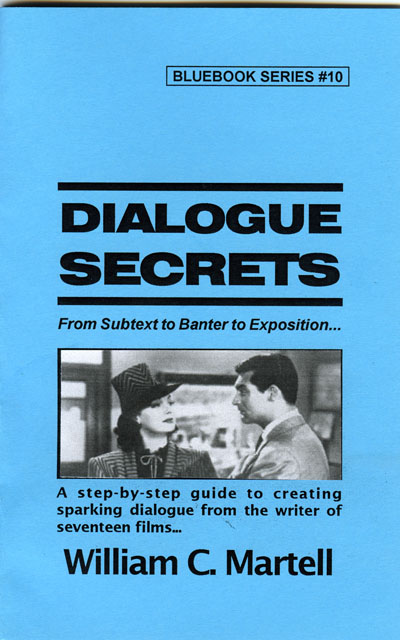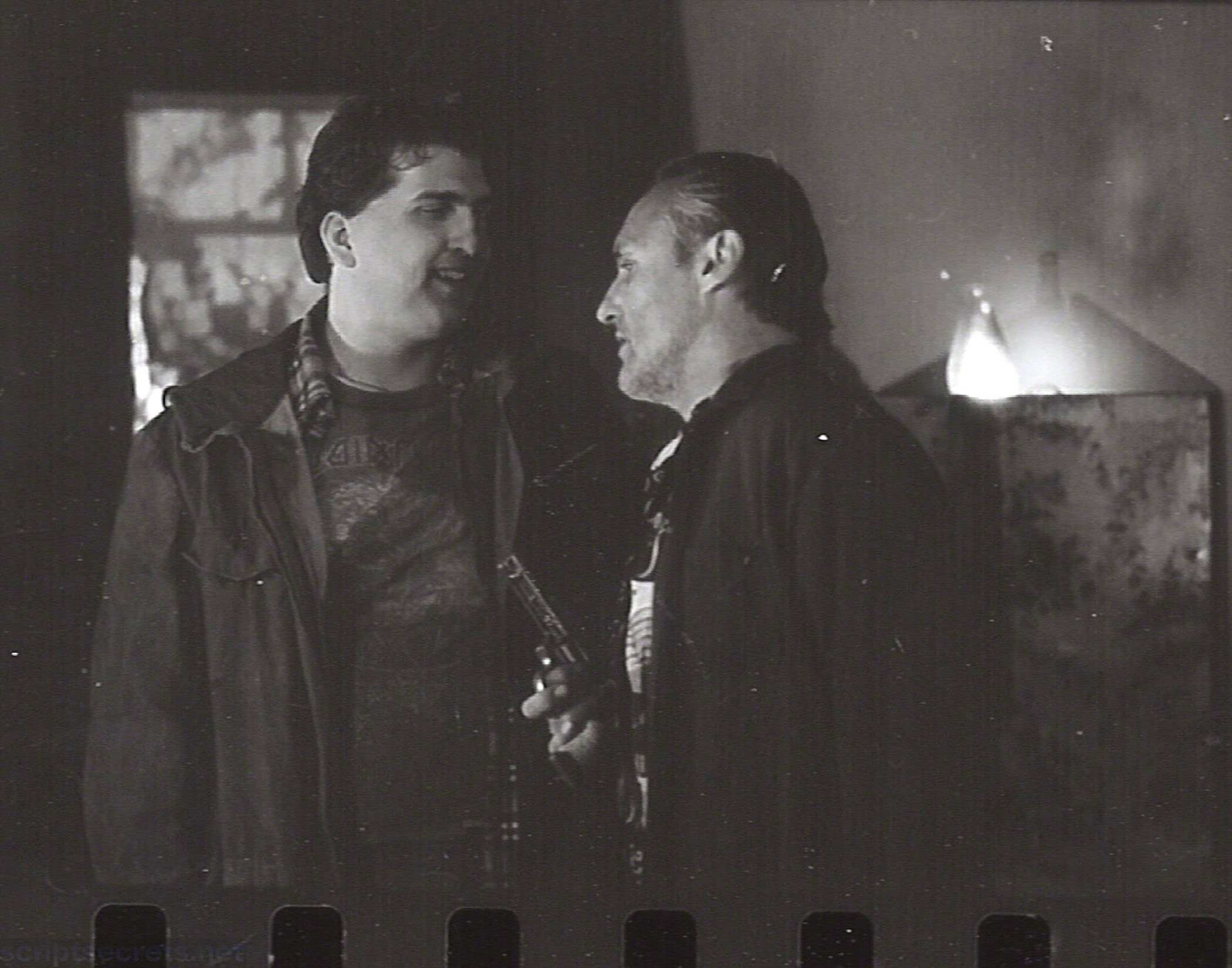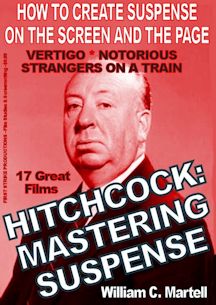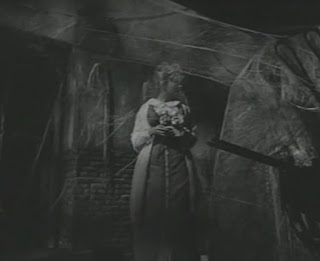Nobody sets out to write stilted, contrived dialogue; yet we’re all been in some cinema wanting to scream at the screen: “Nobody talks like that!” Maybe you’ve even wanted to scream that when reading a friend’s script... or your own. So how do we create dialogue that sounds like something people might actually say?
In the clip I mention my first “realistic dialogue experiment” was to go into the wilds of Burbank armed with tape recorder to collect actual dialogue of indigenous human beings. After filling thirty minutes of tape with the conversations of authentic teenagers and businesspeople, I returned to my lab to transcribe and study this real dialogue. I discovered that I had thirty pages of pointless blathering. A meandering mess that wasn’t witty or interesting... and didn’t make any sense. In the real world, people talk a lot but say nothing. I don’t really want to spend 90 minutes of screen time hoping that someone will say something worthwhile.
My second experiment involved videotaping professional actors improvising dialogue. They were given characters and a situation. After about 20 minutes of videotape, I learned that even talented actors create dialogue that meanders around and serves no purpose. The added bonus was amazing footage of actors *thinking* about what they should say next in a way that real humans don’t really do - we jump in with whatever’s on the top of our heads, even if it sounds stupid. The actors were afraid of saying something stupid - so they thought about what their character would say. Real people don’t think about what their character would say - they are the character! They just say it! But even when the actors seemed to get in the groove, the results were mostly pointless talking that would end up on the cutting room floor.
What I learned from these experiments is that no one really wants realistic dialogue in their film, what they wants is dialogue that *appears* to be realistic, but really serves a story and character purpose. Just as we create our story instead of filming every day life, we need to create our dialogue. A writer can go over and over a dialogue exchange until everything is the very best that it can be, improvised dialogue is the rough draft that needs a lot of work. Realistic dialogue - from the wild - is just pointless jabbering most of the time. Not dramatic or even interesting.
WHAT IS DIALOGUE?
According to Webster’s, dialogue is a conversation between two or more persons. The root word of conversation is converse, meaning contrary or opposite. So dialogue requires at least two people talking who have opposing viewpoints. If both people agree with each other - what are they talking about? This doesn’t mean that every conversation needs to be a heated argument, but you do need to focus on the conflict in the conversation. You may have two people who agree on the main points but disagree on the small stuff - and that’s what the conversation is about. They agree on *what* they should do, but not *how* they should do it, or something similar. If you have a scene where two people are discussing going to the movies and both want to see the same movie, why not just cut to them watching the movie? There is no “converse” in that conversation, so it is pointless and belongs on the cutting room floor.
If only one person is talking, you no longer have dialogue. In the real world, no one just lets you talk for a paragraph or two, they cut in with their two cents. And they don’t politely wait for you to finish. Conversation is like a game of tennis, bouncing back and forth between the players. Each one trying to score their point.
Just like in tennis, every “bounce” of conversation slightly changes the direction of the conversation. Realistic dialogue doesn’t seem to be heading in a pre-determined direction; it’s evolving with every bounce. As writers we may know where the conversation will end up, but the characters don’t and the dialogue isn’t taking the obvious route to that destination.
CONFUSION
Because one character doesn’t know what the other is going to say, they don’t have that perfectly formulated response. In fact, they are likely to misunderstand what the other person says or means. In the heat of an argument, the potential for misunderstanding increases. “I love you” may sound like “I loathe you”. “Your stupid job” may sound like “You’re stupid!” - the other person’s response coming even before the sentence is finished. Real dialogue is filled with confusion and misunderstandings. Look at each line of dialogue from the listener’s perspective: how might they misconstrue the meaning? This is a great way to expose character. Characters shouldn’t respond the way you want them to, or the story needs them to; but the way their history and attitude and *character* forces them to.
I love using misunderstandings to create reversals in dialogue. Leading the audience to think one thing, then pulling the rug out from under them. In my cable film HARD EVIDENCE protagonist Ken Turner has been caught cheating by his wife Madeline and banished to the living room sofa. One morning they bump into each other in the kitchen.
See how the misunderstanding creates a little twist in the story? He thought they were making up, when really they were breaking up. We want dialogue that *sounds realistic* but is crafted to give the audience information in the most interesting and entertaining way.MADDYThat couch can’t be too comfortable to sleep on.
KENWhat are you saying? I can come back to the bedroom, now?
MADDYNo. I think you should move out.
EXPOSITION
The best way to make dialogue sound realistic is to let it come out and play. As SCREENwriters we are writing for the screen, telling the story visually. Bad dialogue pops up when it is forced to tell the story - when it becomes exposition. I talk about this a little in the clip - you don’t want the dialogue to be stuck doing all of the heavy lifting in your story, you want it to be the icing on the cake. That way it can “come out and play” instead of shouldering the weight of plot. The way to do that is to focus on telling your story visually - allowing the actions of your characters to tell the story. We are SCREENwriters, right? No SPEAKERwriters. So we are writing for the screen first. That’s how we are telling our stories - through the image part of the screenplay. This allows our dialogue the freedom to be entertaining and add an additional layer to the story that is already being told visually.
You can have two characters *talk* about how something is done, or you can have one character demonstrate how it is done to the other. When I was working for Safeway Grocery we had a cardboard bailer. You tossed empty boxes into the machine, pressed the button, and it compressed the cardboard. I was working midnight to 9am stocking crew for a while, and I threw a lot of cardboard into the machine and pressed that button to compress it. But eventually it became full - no more compression possible. So a senior employee showed me how to tie the cardboard bail and eject it onto a pallet to be shipped out. Eventually I was shown how to stack the bails, using this claw arm that was attached to the back of the bailer. The “dialogue” in both scenes was “Watch what I do and remember, you are doing the next one.” And then he tied the bail... and I learned how it was done. That ended up in a screenplay I wrote called NIGHT STOCKERS about a wanna be stand up comic who creates a revolt against an ahole store manager who actually had a ruler to measure employees sideburns, hair, skirt hemlines, etc - and would write you up and fire you if you were over regulations. I had that manager at Safeway!
But the “lesson” of demonstrating something complex instead of having a long monologue about it carried over into my screenwriting. I have written several science fiction screenplays, and instead of some explanation of this future, I just showed how it worked. That same principle was used in my two submarine warfare movies for HBO - I just showed people on submarines accurately doing their jobs, hot bunking, and all of the other things that some bad writer might have explained with dialogue. Demonstrate! That way dialogue is free to come out and play!
Movie dialogue is different than realistic dialogue - it’s what we *wish* we had said. You’ve been in an argument or a conversation and then the next day wished you had said “___________” instead of whatever bland thing you said in the actual conversation. In a movie screenplay, you can do that! You can use all of those clever, cutting, brilliant things that you think of the next day... and make your characters look like the person that you wish you were. The magic of writing!
So take the time to come up with great dialogue... and leave the “plot heavy lifting” for the character’s actions.
Good luck and keep writing!
- Bill

50 Tips On Dialogue!
*** DIALOGUE SECRETS *** - For Kindle!
*** DIALOGUE SECRETS *** - For Nook!
Expanded version with more ways to create interesting protagonists! How to remove bad dialogue (and what *is* bad dialogue), First Hand Dialogue, Awful Exposition, Realism, 50 Professional Dialogue Techniques you can use *today*, Subtext, Subtitles, Humor, Sizzling Banter, *Anti-Dialogue*, Speeches, and more. Tools you can use to make your dialogue sizzle! Special sections that use dialogue examples from movies as diverse as "Bringing Up Baby", "Psycho", "Double Indemnity", "Notorious", the Oscar nominated "You Can Count On Me", "His Girl Friday", and many more! Over 160 pages!
Only $4.99 - and no postage!
USA Folks Click Here.
UK Folks Click Here.
German Folks Click Here.
French Folks Click Here.
Espania Folks Click Here.
Canadian Folks Click Here.
Other countries check your Amazon websites... it's there!
Thank you to everyone!
Bill


































